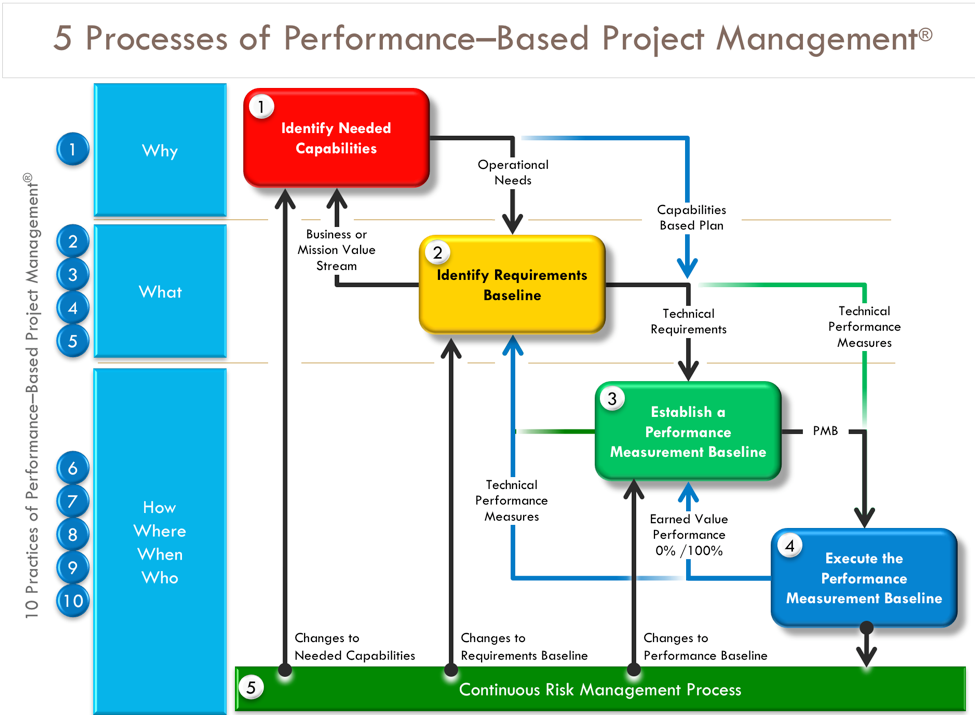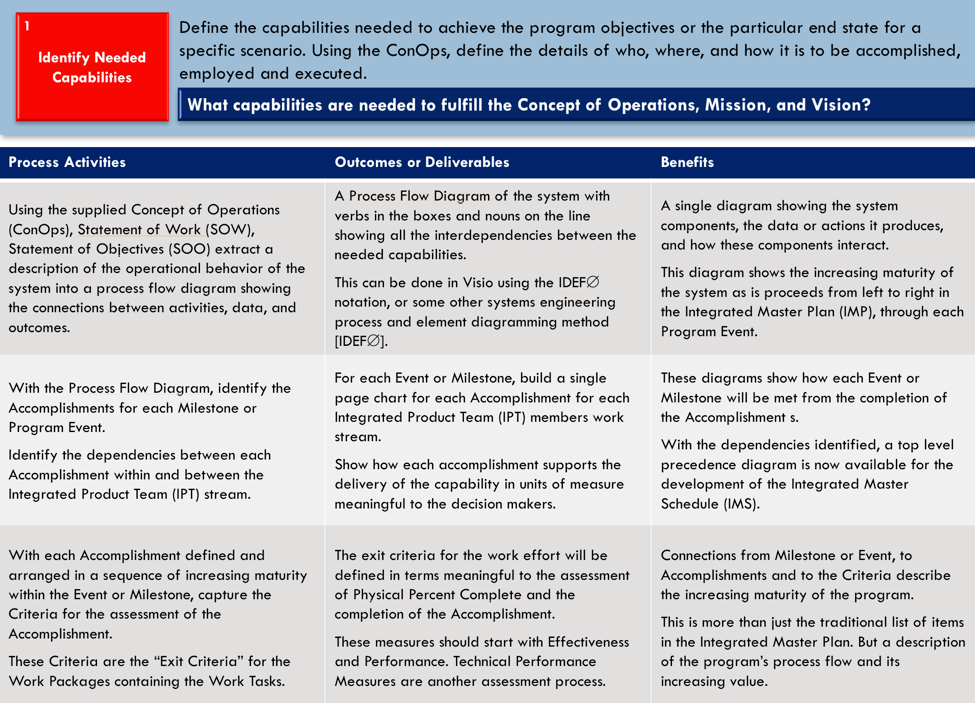From last week’s post, we covered the first of five processes needed to implement the five principles of project success. These processes represent a sequence of activities that increase the maturity of the programmatic and technical aspects of a project or program. The plans that result from these efforts describe the increasing maturity of the product or services that are the deliverables from the program.
These five processes are:
- Identify needed system capabilities. Define the set of capabilities (business, operational or technical) needed to achieve the program objectives or a particular end state for a specific scenario using the Concept of Operations (ConOps). COnOps is a verbal or graphic statement, in broad outline, of an assumption or intent in regard to an operation or series of operations, mission or system.
- Establish requirements baseline. Define the technical, organizational and operational requirements that must be in place for the system capabilities to be fulfilled. Define these requirements in terms isolated from the implementation details. Only then, bind these requirements with the technical alternatives.
- Establish performance measurement baseline. Build a time‒phased network of scheduled activities describing the work to be performed, the budgeted cost for this work and the organizational elements that produce the deliverables from this work. Define the technical performance measures showing how this work proceeds according to the technical and programmatic plan.
- Execute the performance measurement baseline. Execute the performance measurement baseline work packages while assuring all performance assessments represent measures of physical percent complete.
- Perform continuous risk management. Identify, plan and budget risk mitigation or retirement activities to assure you handle impediments to progress.
These five process areas must all be present in some form for success. Skipping any process area, or performing the process out of order: capabilities, requirements, baseline and execution, with continuous risk management lays the foundation for a troubled project.
Each process area builds on the previous area to increase the fidelity of the actionable information needed by the decision makers. This method is independent of any specific development of engineering process – iterative, incremental and linear processes are all equally effective.
These Five Processes are related in the following way:

With our concept of operations in hand, we need to identify the needed capabilities to achieve the project’s objectives or some end state for a specific scenario in the business. Using the ConOps, we need to define the details of who, where and how these scenarios will be accomplished, employed or executed.
Here’s the process activities, their outcomes or deliverables and the tangible benefit to the project that defines what capabilities are needed to fulfill the ConOps, mission or vision for the business or stakeholder.

Identifying the needed capabilities the project is to deliver is the most critical success factor for any project, no matter the domain or the development method. Without having a definitive set of capabilities, the technical and operational requirements have no home for assuring they will support the business need.
Once we have these capabilities defined, we can move to the other four processes, starting next week.
Glen Allenman is part of the GovLoop Featured Blogger program, where we feature blog posts by government voices from all across the country (and world!). To see more Featured Blogger posts, click here.





Leave a Reply
You must be logged in to post a comment.